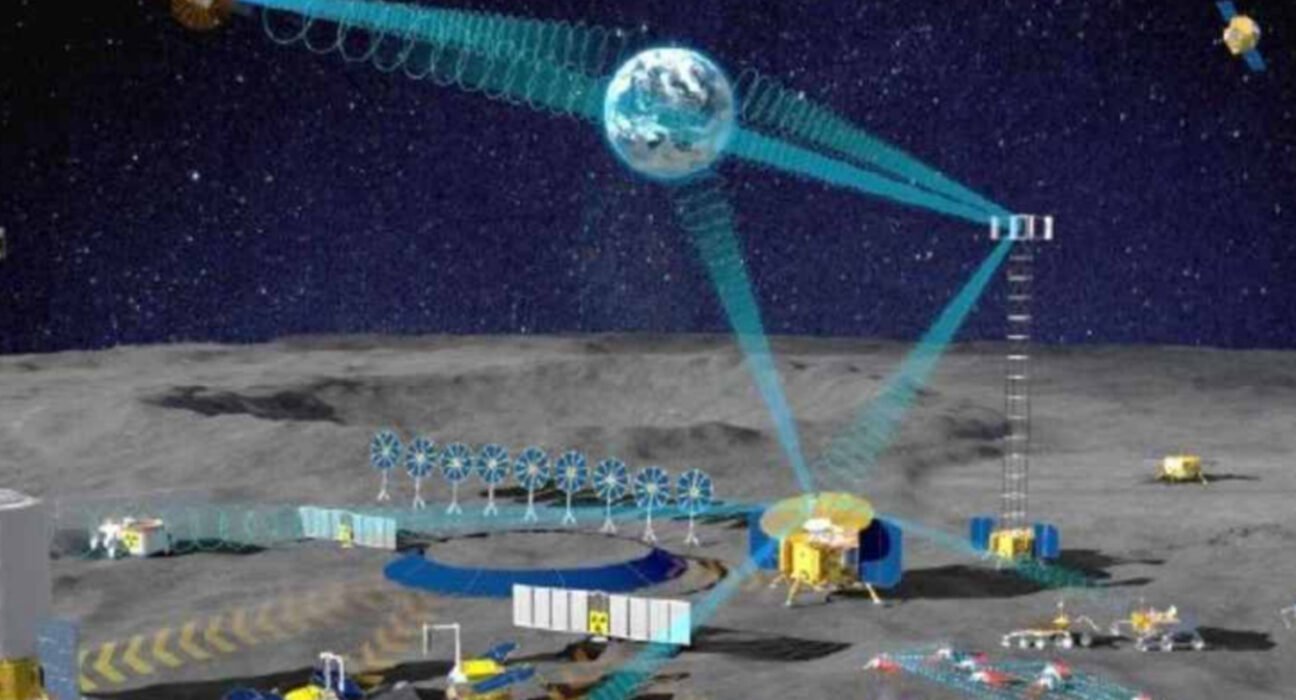LEYLAND, United Kingdom — China says a number of countries have committed to join its International Lunar Research Station moon base initiative.
Russia, Pakistan, the United Arab Emirates and the Asia-Pacific Space Cooperation Organization (APSCO) have signed agreements to engage in the ILRS, with more than ten further countries and organizations currently negotiating agreements, according to a report by the state-owned Ta Kung Pao newspaper.
Malaysia is one of the countries discussing terms of the project, according to the Kuala Lumpur-based China Press. Venezuela has also spoken positively to an invitation to join the ILRS.
The ILRS project aims to construct a permanent lunar base in the 2030s with a series of stepping stone missions before the end of this decade.
China announced in April that it was establishing the International Lunar Research Station Cooperation Organization (ILRSCO) to coordinate and manage the project.
According to a recent presentation by the Deep Space Exploration Laboratory (DSEL) under the China National Space Administration (CNSA), China aims to complete the signing of agreements and memorandums of understanding with space agencies and organizations for founding members of ILRSCO by October this year.
First signatories will enjoy more favorable terms and more rights as founding members, according to DSEL.
The organizations’ headquarters will be located in the Deep Space Science City, in Hefei in Anhui province, with centers focusing on design simulation, operation control, data processing, sample storage and research, and international training centers. The centers will be named after Chinese names for the planets of the solar system.
China aims to define ILRS task sharing and sign and approve intergovernmental agreements among founding countries of the ILRSCO before the end of 2024.
Wu Weiren, director of DSEL, in April reiterated that all countries and organizations around the globe are welcome to join the ILRS. DSEL was founded in 2022 and acts as a contractor for lunar exploration and is engaged in the ILRS and international cooperation.
“As with the United States’ Artemis programme, the devil is in the detail of the agreements between China and smaller partners or participants in their respective lunar projects, “ Bowen, an associate professor at the University of Leicester, told SpaceNews.
“These are symbolic gestures today, whilst the actual contributions and returns in material, financial, political and human terms remain to be seen. The precedents both ILRS and Artemis may set for the future governance of the moon within the Outer Space Treaty (OST) framework make it increasingly attractive for many smaller states or emerging space powers to sign up to one or both lunar projects and have a say in the moon’s political future, and that of the OST’s implementation as the Moon gets busier.“
The ILRS base itself will be constructed in the 2030s by five planned missions. These will establish nuclear energy, communications, astronomical observation and other infrastructure for an initially robotic research station which will later host astronauts. A later stage will see ILRS used to validate technology and capabilities for a crewed mission to Mars, according to DSEL.
The ILRS was first presented in 2021 as a joint project by China and Russia. It is now described as a project proposed by China and to be jointly built by many countries. The change follows Russia’s invasion of Ukraine.
China also envisions building a Queqiao constellation to provide communication, navigation and remote sensing services for its lunar and deep space exploration plans.
https://platform.twitter.com/embed/Tweet.html?creatorScreenName=AJ_FI&dnt=true&embedId=twitter-widget-0&features=eyJ0ZndfdGltZWxpbmVfbGlzdCI6eyJidWNrZXQiOltdLCJ2ZXJzaW9uIjpudWxsfSwidGZ3X2ZvbGxvd2VyX2NvdW50X3N1bnNldCI6eyJidWNrZXQiOnRydWUsInZlcnNpb24iOm51bGx9LCJ0ZndfdHdlZXRfZWRpdF9iYWNrZW5kIjp7ImJ1Y2tldCI6Im9uIiwidmVyc2lvbiI6bnVsbH0sInRmd19yZWZzcmNfc2Vzc2lvbiI6eyJidWNrZXQiOiJvbiIsInZlcnNpb24iOm51bGx9LCJ0ZndfZm9zbnJfc29mdF9pbnRlcnZlbnRpb25zX2VuYWJsZWQiOnsiYnVja2V0Ijoib24iLCJ2ZXJzaW9uIjpudWxsfSwidGZ3X21peGVkX21lZGlhXzE1ODk3Ijp7ImJ1Y2tldCI6InRyZWF0bWVudCIsInZlcnNpb24iOm51bGx9LCJ0ZndfZXhwZXJpbWVudHNfY29va2llX2V4cGlyYXRpb24iOnsiYnVja2V0IjoxMjA5NjAwLCJ2ZXJzaW9uIjpudWxsfSwidGZ3X3Nob3dfYmlyZHdhdGNoX3Bpdm90c19lbmFibGVkIjp7ImJ1Y2tldCI6Im9uIiwidmVyc2lvbiI6bnVsbH0sInRmd19kdXBsaWNhdGVfc2NyaWJlc190b19zZXR0aW5ncyI6eyJidWNrZXQiOiJvbiIsInZlcnNpb24iOm51bGx9LCJ0ZndfdXNlX3Byb2ZpbGVfaW1hZ2Vfc2hhcGVfZW5hYmxlZCI6eyJidWNrZXQiOiJvbiIsInZlcnNpb24iOm51bGx9LCJ0ZndfdmlkZW9faGxzX2R5bmFtaWNfbWFuaWZlc3RzXzE1MDgyIjp7ImJ1Y2tldCI6InRydWVfYml0cmF0ZSIsInZlcnNpb24iOm51bGx9LCJ0ZndfbGVnYWN5X3RpbWVsaW5lX3N1bnNldCI6eyJidWNrZXQiOnRydWUsInZlcnNpb24iOm51bGx9LCJ0ZndfdHdlZXRfZWRpdF9mcm9udGVuZCI6eyJidWNrZXQiOiJvbiIsInZlcnNpb24iOm51bGx9fQ%3D%3D&frame=false&hideCard=false&hideThread=false&id=1670842241869398157&lang=en&origin=https%3A%2F%2Fspacenews.com%2Fchina-attracts-moon-base-partners-outlines-project-timelines%2F&sessionId=86cfcd58fe3488d2d60d45c52e5e8472b6dc6d3b&siteScreenName=SpaceNews_Inc&theme=light&widgetsVersion=aaf4084522e3a%3A1674595607486&width=550px
China’s next step in its lunar exploration plans will be the launch of the Queqiao-2 lunar relay satellite early next year. This will be followed by the Chang’e-6 lunar far side sample return mission scheduled to launch in May 2024.
Chang’e-7, consisting of an orbiter, lander, rover and hopping spacecraft designed to seek out water-ice in permanently shadowed craters, will launch in 2026 and target a landing site Shackleton crater. Chang’e-8 will launch two years and land nearby Chang’e-7, carrying a robot designed to test 3D printing bricks from lunar regolith. These missions will serve as a basis for the full ILRS project to follow in the 2030s.
The ILRS project and ILRSCO are somewhat analogous to the U.S.-led Artemis program and its political underpinning, the Artemis Accords, to which 25 countries, most recently Spain, have signed up.
The countries so far attracted by China are those with established ties with Beijing and its space endeavors.
“Many of these countries are not surprisingly leaning towards the ILRS as they are already partnered with China in space projects or on other economic and technological fronts, and China’s leadership do not want ILRS to be seen as less internationally-oriented than Artemis,” says Bowen.
The emergence of two separate, nascent moon projects within a tense geopolitical context suggests potential issues and friction as the future of lunar exploration unfolds. Yet, both may develop alongside each other.
“Some of those states are also members of the Artemis Accords, which reminds us that since both projects are ostensibly exploratory and scientific in nature, we do not need to adopt a zero-sum mentality to the Artemis – ILRS situation on the Moon,” says Bowen.
“However, as we have seen with the UAE, it fell foul of ITAR regulations when developing its contribution to the ILRS, meaning that members of both the ILRS and Artemis need to walk a fine line between the streams of both initiatives.”

